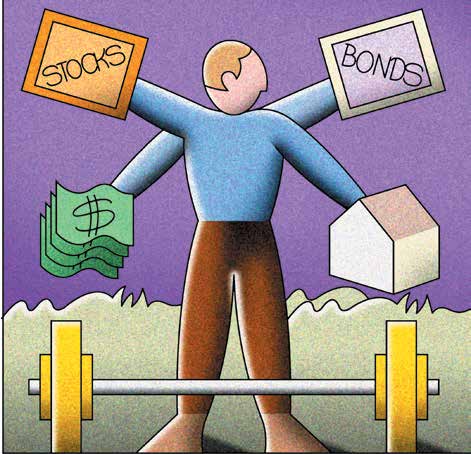Avoid Debt And Credit Problems
education, advance your own career skills, or buy a
car for getting to work can provide long-term financial
High debt and misuse of credit cards make it tough to
benefits.
save for retirement. Money that goes to pay interest,
Bad debt is when you borrow for things that
late fees, and old bills is money that could earn money don’t provide financial benefits or that don’t last as for retirement and other goals.
long as the loan. This includes borrowing for vacations,
How much debt is too much debt? Debt isn’t
clothing, furniture, or dining out.
necessarily bad, but too much debt is. Add up what you
pay monthly in car loans, student loans, credit card
and charge card loans, personal loans — everything
but your mortgage. Divide that total by the money
you bring home each month. The result is your “debt
ratio.” Try to keep that ratio to 10 percent or less. Total
mortgage and nonmortgage debt should be no more
than 36 percent of your take-home pay.
U.S. Department of Labor Employee Benefits Security Administration 11
SAVINGS FITNESS A GUIDE TO YOUR MONEY AND YOUR FINANCIAL FUTURE
Do you have debt problems? Here are some
Avoid high-interest rate loans. Loan solicitations that warning signs:
come in the mail, pawning items for cash, or “payday”
Borrowing to pay off other loans.
loans in which people write postdated checks to check-
Creditors calling for payment.
cashing services are usually extremely expensive. For
Paying only the minimum on credit cards.
example, rolling over a payday loan every 2 weeks for
Maxing out credit cards.
a year can run up interest charges of over 600 percent!
Borrowing to pay regular bills.
While the Truth-in-Lending Act requires lenders to
Being turned down for credit.
disclose the cost of your loan expressed as an annual
percentage rate (APR), it is up to you to read the fine
Facts Women Should Know About Preparing For Retirement
Women face challenges that often make it more difficult for them than men to ad e quate ly save for retirement. In light of these challenges, women need to pay special at tention to mak ing the most of their money.
• Women tend to earn less than men and work fewer years.
• Women stay at jobs for a shorter period of time, work part time more often, and interrupt their careers to raise children. Consequently, they are less like ly to qual ify for com pa ny-sponsored re tire ment plans or to receive the full benefits of those plans.
• On average, women live 5 years longer than men, and thus need to build a larg er re tire ment nest egg for themselves.
• Some studies indicate women tend to invest less aggressively than men.
• Women tend to lose more income than men following a divorce.
• Women age 65 or older are more than 60 percent more likely than men the same age to re ceive in come be low the pov er ty lev el.
For more information, call the Employee Benefits Security Administration at 1-866-444-3272 and ask for the book lets Women and Retirement Savings, Taking the
Mystery Out of Retirement Planning, and QDROs: The Division of Retirement Benefits
through Qualified Domestic Relations Orders (for ex am ple, di vorce or ders). Also call the Social Security Administration at 800-772-1213 for their booklet What Every Woman Should
Know, or vis it the agen cy’s website at www.socialsecurity.gov.
12

STRENGTHENING YOUR
SFITNESS PLAN
print telling you exactly what the
details of your loan and its costs are.
The key to recognizing just
how expensive these loans can be is to
focus on the total cost of the loan —
principal and interest. Don’t just look
at the monthly payment, which may be
small, but adds up over time.
Handle credit cards wisely. Credit
cards can serve many useful purposes,
but people often misuse them. Take,
for example, the habit of making only
the 2 percent minimum payment
each month. On a $2,000 balance with
a credit card charging 18 percent
interest, it would take 30 years to pay
off the amount owed. Then imagine
how fast you would run up your debts if
you did this with several credit cards at
the same time. (For more information
on handling credit wisely, see the
debts. Or you can work with your creditors directly to try
“Resources” section at the end of this booklet.)
and work out payment arrangements.
Here are some additional tips for handling
credit cards wisely.




